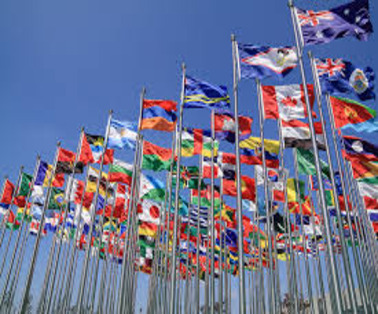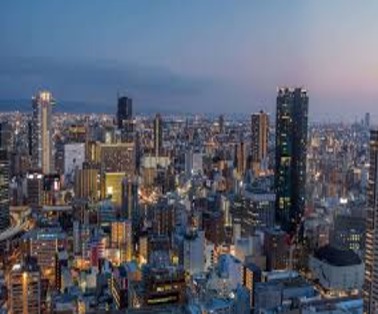The WTO 12th Ministerial Conference was held in Geneva, Switzerland.
Key Points of the WTO 12th Ministerial Conference
- The WTO 12th Ministerial Conference was held in Geneva from 12-17 June.
- The WTO 12th Ministerial Conference was supposed to end on 15 June, but with intensifying negotiations, the conference was extended by two days.
- The next World Trade Organization ministerial conference will be held in Abu Dhabi, United Arab Emirates in February 2024
- The UAE and Cameroon were both vying to host the event and came to an informal agreement for Abu Dhabi to host the first one and Cameroon to do the next
Discussions at 12th Ministerial Conference of WTO
After days of protracted negotiations, the WTO 12th Ministerial Conference agreed to a series of deals relating to

Key Agreements and Outcomes from the WTO 12th Ministerial Conference
Curtailing harmful fishing subsidies
- The WTO passed a multilateral agreement that would curb ‘harmful’ subsidies on illegal, unreported and unregulated fishing for the next four years, to better protect global fish stocks.
- Since 2001, member states have been negotiating the banning of subsidies that promote overfishing.
- The current agreement, which establishes new trading rules, is the second multilateral agreement in WTO’s history.
- India and other developing countries were able to win some concessions in this agreement. They successfully lobbied to remove a section of the proposal that would threaten some subsidies which would assist small-scale artisanal fishing
- Artisanal and traditional farmers would not face any restrictions under this agreement,
Global Food Security
- Members agreed to a binding decision to exempt food purchased by the UN’s World Food Programme (WFP) for humanitarian purposes, from any export restrictions.
- In light of the global food shortages and rising prices caused by the war between Ukraine and Russia, the group’s members issued a declaration on the importance of trade in global food security and that they would avoid bans on food exports.
- However, countries would be allowed to restrict food supplies to ensure domestic food security needs.
E-commerce transactions
- From 2017-2020, developing countries lost a potential tariff revenue of around USD 50 billion on imports from only 49 digital products.
- WTO members had first agreed to not impose custom duties on electronic transmissions in 1998, when the internet was still relatively new. The moratorium has been periodically extended since then.
- However, all members agreed to continue the long standing moratorium on custom duties on e-commerce transmissions until the subsequent Ministerial Conference or until 31st March 2024, depending on whichever comes first.
Covid-19 vaccine production
- WTO members agreed to temporarily waive intellectual property patents on Covid-19 vaccines without the consent of the patent holder for 5 years, so that they can more easily manufacture them domestically.
- The current agreement is a watered down version of the original proposal made by India and South Africa in 2020. They had wanted broader intellectual property waivers on vaccines, treatments and tests.
- The waiver agreed by the WTO was criticized by advocacy groups for being narrow in scope, as it did not cover all medical tools like diagnostics and treatments
WTO Reform
- Members reaffirmed the foundational principles of the WTO and committed to an open and inclusive process to reform all its functions, from deliberation to negotiation to monitoring.
- Notably, they committed to work towards having a well-functioning dispute settlement system accessible to all members by 2024.
What is the WTO and Why is the Ministerial Conference Important?
- The World Trade Organization is the only international organization that deals with the rules of trade between countries.
- The WTO is the successor to the General Agreement on Tariffs and Trade (GATT) established in the wake of the Second World War.
- Its objective is to help trade flow smoothly, freely and predictably.
- It was founded in 1995
- The WTO is run by its 164 members
- According to its rules, all decisions are taken through consensus and any member can exercise a veto.
- Its aim is to promote free trade, which is done through trade agreements that are discussed and signed by the member states.
- The WTO also provides a forum for countries to negotiate trade rules and settle economic disputes between them.
- The WTO Secretariat is based in Geneva (Switzerland).
WTO Structure and Governance
Ministerial Conference: Structure of the WTO is dominated by its highest authority, the Ministerial Conference, composed of representatives of all WTO members, which is required to meet at least every two years, and which can take decisions on all matters under any of the multilateral trade agreements.
General Council: It is composed of all WTO members and is required to report to the Ministerial Conference.
Dispute Settlement Body and Trade Policy Review Body: General Council convenes in two particular forms, Dispute Settlement Body: To oversee the dispute settlement procedures and Trade Policy Review Body: To conduct regular reviews of the trade policies of individual WTO members.
History of WTO
- The WTO started functioning on 1 January 1995, but its trading system is half a century older.
- Since 1948, the General Agreement on Tariffs and Trade (GATT) had given the rules for the system.]
- Over the years, GATT evolved through several rounds of negotiations.
- The General Agreement on Tariffs and Trade (GATT) had its last round in 1986 and it lasted till 1994.
- This was known as the Uruguay Round, and it led to the formulation of the World Trade Organization (WTO).
- While GATT mostly dealt with trade in goods, the WTO and its agreements could not only cover goods but also trade in services and other intellectual properties like trade creations, designs, and inventions.
WTO’s Core Objectives
- To set and enforce rules for international trade.
- To provide a forum for negotiating and monitoring further trade liberalization.
- To resolve trade disputes.
- To increase the transparency of decision-making processes.
- To cooperate with other major international economic institutions involved in global economic management.
- To help developing countries benefit fully from the global trading system.
A Look at Past WTO Ministerial Conferences
|
Ministerial Conferences |
Year |
Description |
|
MC1 |
1996 |
Ministers of finance, trade, foreign, and agriculture from more than 120 countries participated and the following issues were in discussion.
These are known as the Singapore Issues. |
|
MC2 |
1998 |
Discussions on the implementation of Singapore Issues. Further discussions for the next round related to Export subsidies, market access, etc. |
|
MC3 |
1999 |
The Uruguay Round was discussed. Further discussions on agricultural and services mandated at the last Ministerial. The Ministerial Conference ended without a conclusion though. |
|
MC4 |
2001 |
The Doha Round was discussed. |
|
MC5 |
2003 |
Discussions on the progress of the Doha Development Agenda and other negotiations from the last Ministerial. |
|
MC6 |
2005 |
Discussions on aiming to conclude the Doha Round by 2006. Adoption of the ‘Swiss Formula’ to cut down tariffs on non-agricultural goods (NAMA) by both developed and developing countries with different coefficients. |
|
MC7 |
2009 |
This meeting didn’t revolve around the Doha Round. Ministers discussed various other ideas for further development. The theme of MC7 was ‘The WTO, the Multilateral Trading System and the Current Global Economic Environment’ |
|
MC8 |
2011 |
Discussions on multiple topics for least developed nations and trade policy reviews. WTO approved Montenegro, Russian Federation, and Samoa accessions. Doha Round was discussed to make the mandate more effective, operational, and precise. |
|
MC9 |
2013 |
The ‘Bali Package’ was adopted by the WTO that aimed at the following points:
The Bali Package is a selection of issues from the broader Doha Round negotiations. Yemen became a part of WTO. |
|
MC10 |
2015 |
Discussion on agriculture, cotton, and issues of LDCs. The Nairobi Package was adopted by WTO that delivered beneficial commitments to WTO’s poorest members. |
|
MC11 |
2017 |
Discussions on e-commerce duties, fisheries subsidies, and other commitments to negotiations in all sectors. |
To Download Monthly Current Affairs PDF Click here
Get Inspiration from CLAT 2025 Topper
Click here to get a free demo
Everything About CLAT 2025



